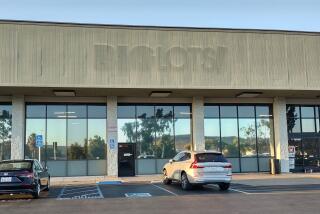A Year of Upheaval in California Retailing
- Share via
January--Vons Grocery management and other investors complete a $750-million leveraged buyout of the company from Household International. Throughout the year, the company launches a new store concept called Pavilion; agrees to buy Pantry Supermarkets, a chain of upscale stores, and announces plans for Tianguis, the first major Latino-oriented chain of a big U.S. food retailer.
February--HRT Industries announces the closing of 32 Zodys discount stores, eliminating 2,400 jobs.
February--Stater Bros., a regional supermarket chain, sets the stage for a bitter, months-long battle for control by suspending and suing its president and chief executive, Jack H. Brown. He regains control in June.
March--Boys Market, a 43-store regional supermarket chain, agrees to a buyout by management and a Los Angeles merchant banking firm. The deal is completed in April.
May--Jurgensen’s, a posh, 10-store grocery chain, agrees to a purchase by Old Dominion Financial Corp., but the deal falls through. In November, the company strikes a deal with Yucaipa Capital Corp., a private investment firm.
May--Thrifty Corp., operator of California’s largest drugstore chain as well as the Big 5 sporting goods stores, agrees to an $885-million takeover by Pacific Lighting, parent of Southern California Gas.
June--May Department Stores, parent of May Co. California, launches an effort to buy Associated Dry Goods, parent of J. W. Robinson, for $2.7 billion in stock. After weeks of fighting the takeover on antitrust and other grounds, Associated agrees to the combination in July.
July--After weeks of speculation, Dart Group launches a hostile tender offer for Safeway Stores. At month’s end, Safeway agrees to go private in a $4.1-billion buyout by Kohlberg Kravis Roberts, an investment firm.
August--American Stores announces a restructuring in which its Sav-on drugstores would be renamed Sav-on/Osco, with emphasis on the Osco, the company’s national drug chain.
September--New York investor Asher B. Edelman makes first of several bids for Lucky Stores. Lucky rebuffs him in favor of a restructuring that includes the closing of its Gemco membership discount department stores, the sale of many store locations to the Target division of Dayton Hudson, a repurchase of shares and the sale or spinoff of some specialty units.
October--May Department Stores completes its acquisition of Associated Dry Goods.
November--For the second time in 2 1/2 years, Carter Hawley Hale Stores, parent of the Broadway and Neiman-Marcus, becomes a target of the Limited, a specialty store company, which joins forces with an Ohio developer, Edward J. DeBartolo Sr. The new bid fails in December, as Los Angeles-based Carter Hawley announces plans to split into two companies--department and specialty stores.
December--Gemco stores are closed, eliminating 14,000 jobs. Lucky Stores wins shareholder approval to reincorporate in Delaware, ensuring that its restructuring can go ahead as planned. Vons caps a mind-boggling year for retailers by announcing a complex plan to merge with a Detroit supermarket company and become publicly held.
DR
More to Read
Inside the business of entertainment
The Wide Shot brings you news, analysis and insights on everything from streaming wars to production — and what it all means for the future.
You may occasionally receive promotional content from the Los Angeles Times.










